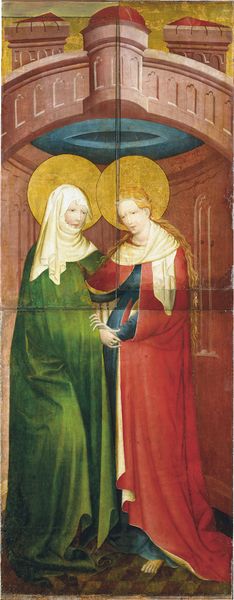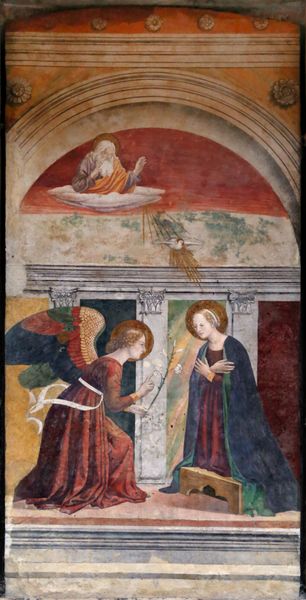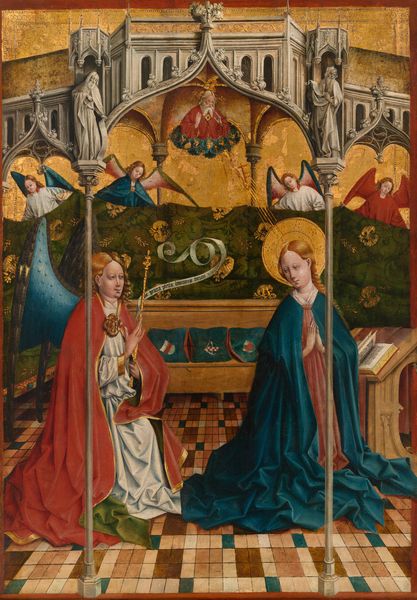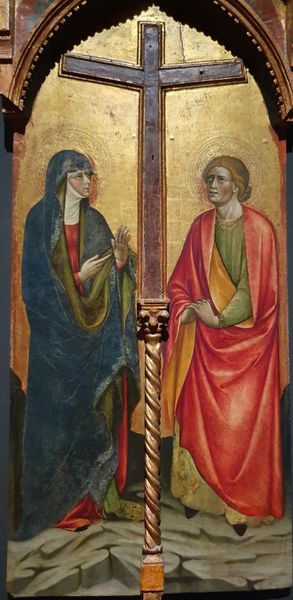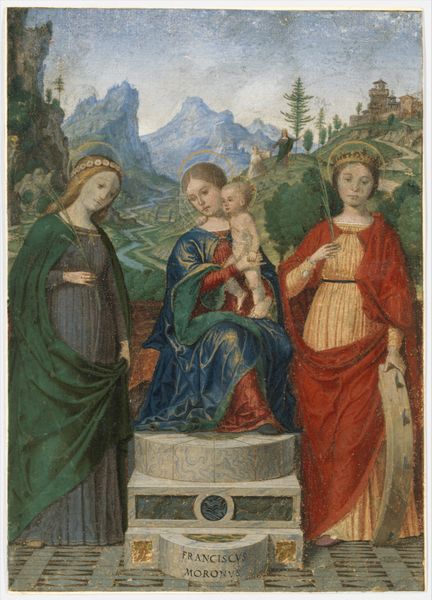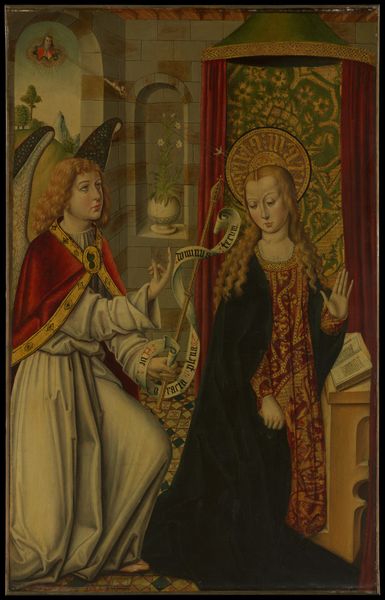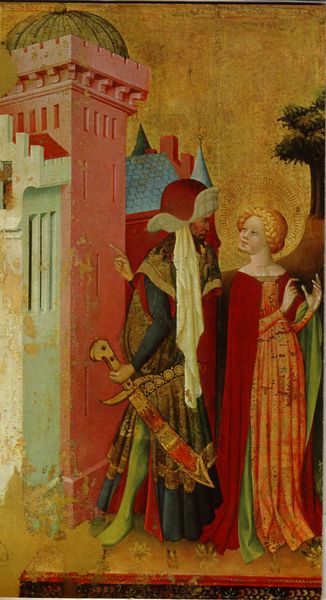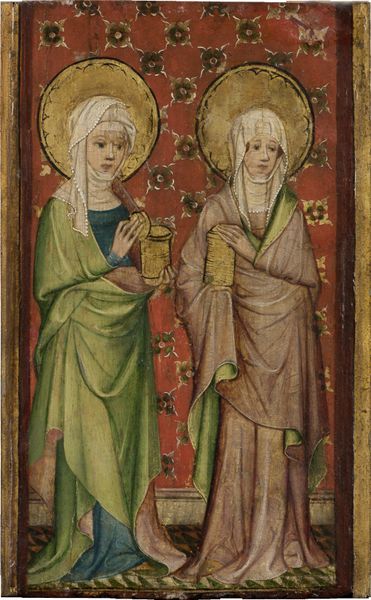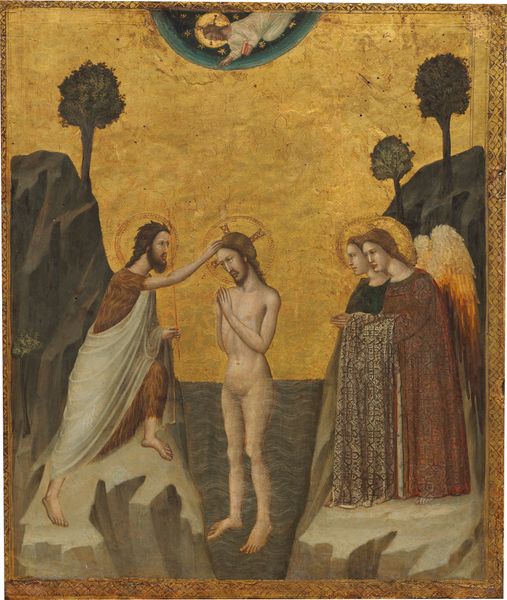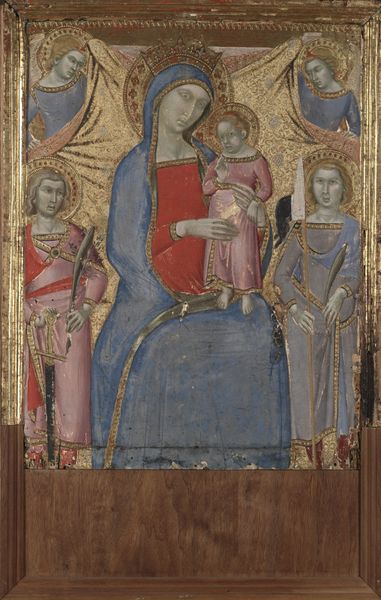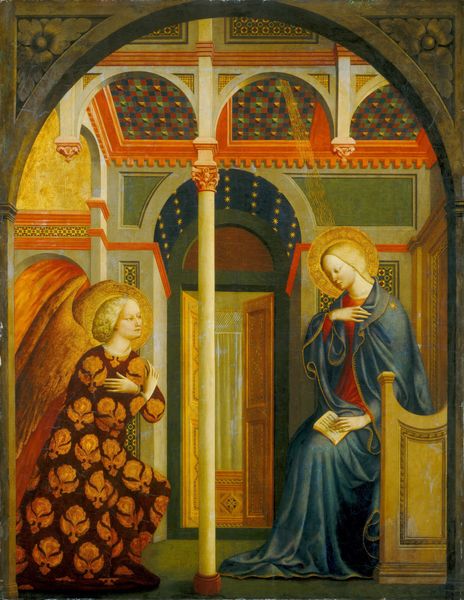
Diptych of Saints Achatius, Barbara, Apollonia, and Sebald c. 1490
0:00
0:00
tempera, painting, watercolor, sculpture
#
portrait
#
medieval
#
water colours
#
tempera
#
painting
#
figuration
#
watercolor
#
coloured pencil
#
sculpture
#
northern-renaissance
#
watercolor
Dimensions: 22 3/8 × 18 3/8 in. (56.8 × 46.7 cm) Image: 21 9/16 × 17 5/8 in. (54.8 × 44.7 cm)
Copyright: Public Domain
Editor: Here we have an intriguing tempera painting on wood panel titled "Diptych of Saints Achatius, Barbara, Apollonia, and Sebald," dating back to around 1490. It's currently housed at the Art Institute of Chicago and is credited to an anonymous artist. I'm struck by the almost dreamlike quality, perhaps because of the soft colors and the slightly melancholic expressions. What jumps out at you when you see this diptych? Curator: It’s interesting you pick up on the melancholy. Look closely at what each figure holds. The palm frond traditionally represents victory, triumph… often martyrdom. Notice too the tower in the background – a powerful, loaded symbol of refuge, but also of imprisonment and isolation. These figures are not merely portraits; they’re containers for deeply held beliefs and cultural memories about resilience, faith, and even suffering. What emotional resonances do you find with those objects and backdrops? Editor: I see your point! I initially just registered them as "holy people," but knowing the meaning behind those symbols gives me pause. Does the positioning of each figure next to specific objects impact how we interpret their story? Curator: Absolutely! Consider the historical context. Religious art of this period often served as a visual language for a largely illiterate population. Saints become emblems – St. Barbara with her tower signifying protection, others holding the instruments or emblems related to their martyrdom or patronage. The objects become synonymous with the figure’s story and attributes. How does this layer of symbolism affect your understanding of the work now? Editor: It makes me realize how much I can miss if I don’t understand the symbolic language. I think it helps give the image more depth, adding stories within stories! Curator: Exactly! And it prompts us to consider what continuities persist between then and now - how we create, use, and react to imagery laden with historical weight. Editor: This has truly opened my eyes to how symbolic language enriches a work. Curator: Indeed, visual culture encodes stories that resonate across time.
Comments
No comments
Be the first to comment and join the conversation on the ultimate creative platform.

